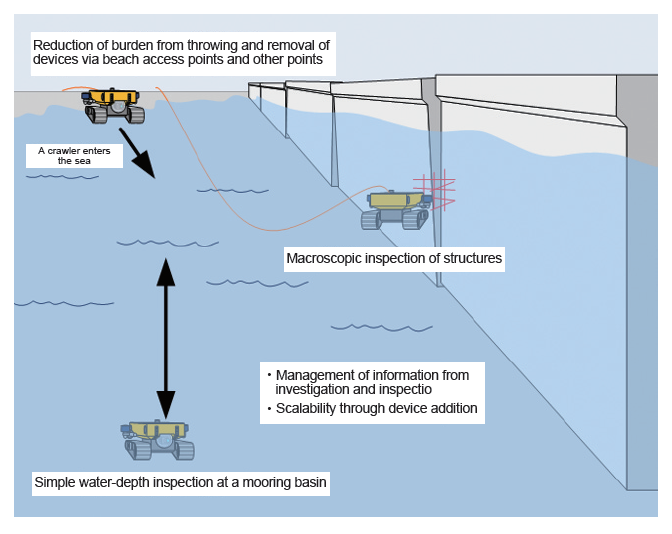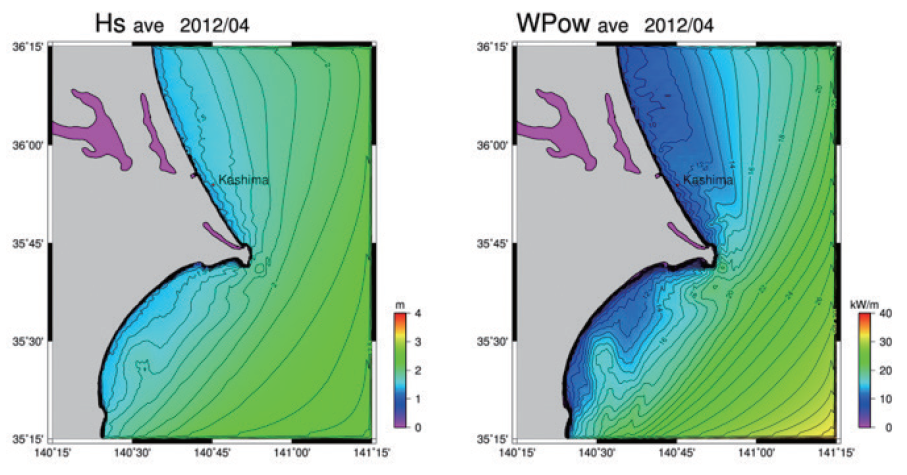Major Research 3A. Research on Development and Utilization of Oceans
Background and Objectives
Since the 1960s, the importance of marine utilization and development has been pointed out. Various approaches for this purpose have been taken, but the progress remains inadequate. One of the reasons is the lack of infrastructure at sea as a hub. Therefore, marine hub ports should be constructed on remote islands including Minamitorishima and Okinotorishima to promote marine utilization and development.
However, these remote islands are surrounded by severe sea climate for port construction which are different from those of general ports in main islands. Further technological development is required to ensure smooth ship berthing, cargo handling, and port construction.
Therefore, in this research theme, we will make maximum use of previously accumulated knowledge regarding waves, seabed soils, port structures, and port construction to construct ports on remote islands, and will also promote marine utilization and development. Specifically, we will clarify the characteristics of waves in isolated reef areas, and will develop a new mooring system for ships. We will also develop technologies for downsizing and reducing the weight of sound video cameras, as well as marine utilization and development.
Research topics
Research and development comprises the following two subthemes:
1.Research on port construction and management in remote islands
We will develop a numerical simulation model for wave transformations on continental shelf boundaries and around isolated islands. We will also propose a technology to create calm-water areas against wave propagation and long-period waves around isolated reefs. At the same time, we will develop a new mooring system applicable to remote islands to improve cargo-handling efficiency for ships.
2.Research on infrastructure technology for utilization and development of oceans
We are trying to downsize and lighten acoustic video cameras, and will also develop an unmanned underwater construction system to construct marine infrastructure. In addition, we will propose an environment-protection technology by promoting the attachment of calcified organisms to structures.
Activities in FY 2016
In technological development regarding the utilization and application of mooring facilities which will be constructed in isolated reef areas on the sea, we introduced floating boundaries into the computing fluid dynamics (CFD) model and newly installed a method of analyzing the motion of moored ships and floating bodies taking into consideration the external-force characteristics of complex waves. We also conducted experiments of floating-body motion on a flat sloping bottom and verified the accuracy of the conventional and new motion-analysis methods.
In technological development regarding new mooring equipment for ships within port areas, we collected and organized information on ship-mooring techniques which are different from conventional techniques using general mooring ropes and fenders, and then evaluated and investigated their applicability.

Overall image of an investigation and inspection system of port facilities in remote islands
In research on Maintenance Inspection and Investigation Technology for Remote Island Ports, we considered reducing the burden of operations and reviewed working platforms. We assumed that a working platform will be used in remote islands and developed a platform. We also conducted basic experiments on the traveling of a compact crawler.
In the development of a next-generation sound imaging system, we developed an acoustic video camera for deep-sea ROVs and then conducted a field experiment and other tank experiments to confirm the camera's performance. In addition, we also developed image presentation softwares of the acoustic video camera.
In research on the practical utilization and application of marine energy at ports, we used a sea area off Choshi as an example to present a potential map of marine energy (wave force) at the location. Based on the results of on-site demonstration experiments of a multiple-resonance type wave power generation system, as well as an offshore wind observation system, we proposed practical systems for future expansion of wave power generation and offshore wind power generation.
In on-site investigation and information analyses regarding the formation and stability of calcium-carbonate ground, we surveyed the geography and biota and sampled coral and sediment at Minamitorishima Island. We also conducted onsite surveys at Rukan reef, Iriomoteshima island, and Ishigaki island, which are sub-sites.

Potential maps of marine energy (wave force) in a sea area off Choshi
Left: characteristic wave height (monthly average)
Right: omnidirectional wave power (monthly average)



